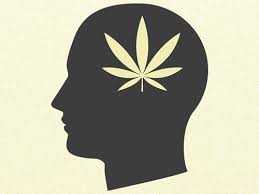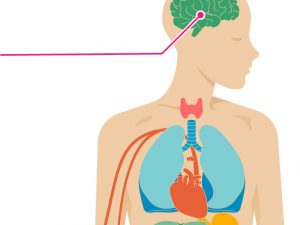Although you know Marijuana has a special effect on the body’s health, have you ever wondered why? Since ancient times, medical Marijuana has been used. Researchers have recently attempted to discover why the body reacts so differently to cannabis.
The short answer is that Marijuana speaks your brain’s language.
Meet the Endocannabinoid System
In the 1960s, THC was first discovered. Researchers discovered that Marijuana contains over a hundred active chemical compounds, which was one of the first things they learned in their search to understand the effects of Marijuana on the body. These compounds were referred to as cannabinoids by researchers.
They discovered that cannabinoids interact with receptors in the human body as they were studying them. These receptors are part of the complex nervous system that sends and receives messages between the brain, the body and other parts. The interaction of these receptors altered the brain’s normal communication.
Researchers were left with a question: How do these cannabinoids interact with specific receptors?
This is when the body produces its cannabinoids. According to a 2018 study published in the International Journal of Molecular Sciences, researchers found that cannabis cannabinoids resembled the body’s cannabinoids. Researchers named these endocannabinoids (since the prefix endo– literally means “within”)
Neurotransmitters are neurotransmitters. Endocannabinoids help sends nerve impulses to the brain to trigger various effects on the body. The brain recognizes cannabinoids from cannabis and allows them to influence behavior, mood, coordination and other aspects of our lives.
Let’s not forget: Cannabinoids were discovered before endocannabinoids. This means that many of our natural neurotransmitters have been named after cannabis terms.
Meet the Cannabinoids
Scientists have discovered at least 113 different cannabinoids, but CBD and THC are well-studied.
THC is short for delta-9-tetrahydrocannabinol, and it’s responsible for Marijuana’s most well-known effects:
- Euphoric “high”
- Memory impairment
- Time altered
- Stimulated appetite
- Slower response time
- Balance and coordination loss
- You will feel less nausea
- Reduced pain.
According to the National Institutes of Health, THC is effective because it closely matches the chemical structure of the endocannabinoid anandamide. Anandamide and THC interact with CB1 receptors. Anandamide, like THC, can affect the perception of pain or reward. However, it is not as potent as THC.
Researchers also discovered a new group of CB2 (Cannadamide and THC) receptors that interact with CB1. CB1 receptors make up most of the central nervous systems (brain and spinal cord), while CB2 receptors form the bulk of the immune system. This is why Marijuana can have both therapeutic and psychoactive effects.
CBD stands for cannabidiol. CBD doesn’t interact with CB1 and CB2 receptors, so it has different effects from THC. CBD is not known to cause a high, but it has calming effects. Some studies suggest that CBD might be able:
- Get rid of your pain
- Reduce inflammation
- And quiet anxiety.
While they are still trying to identify which receptors CBD interacts with, researchers have some clues. They have discovered that CBD interacts with the 5-HT1A serotonin receptor, which may explain the anti-anxiety effects. It interacts with vanilloid receptors (specifically TRPV1), which are known to affect the body’s perception of pain.
The moral of the story is that cannabis has a fascinating effect on the body, and researchers continue to study exactly how it works. It’s important to research cannabis before you invest, as some marketing and health claims can be misleading.



